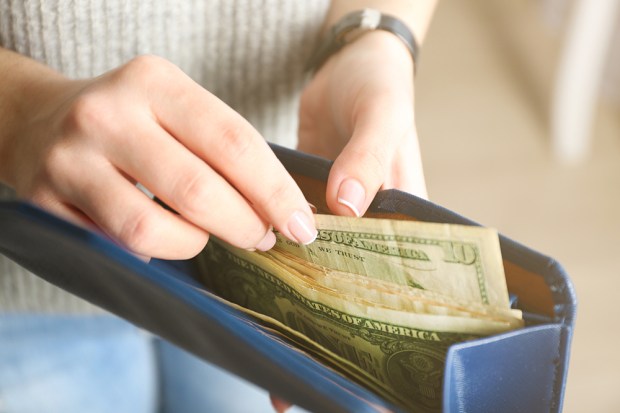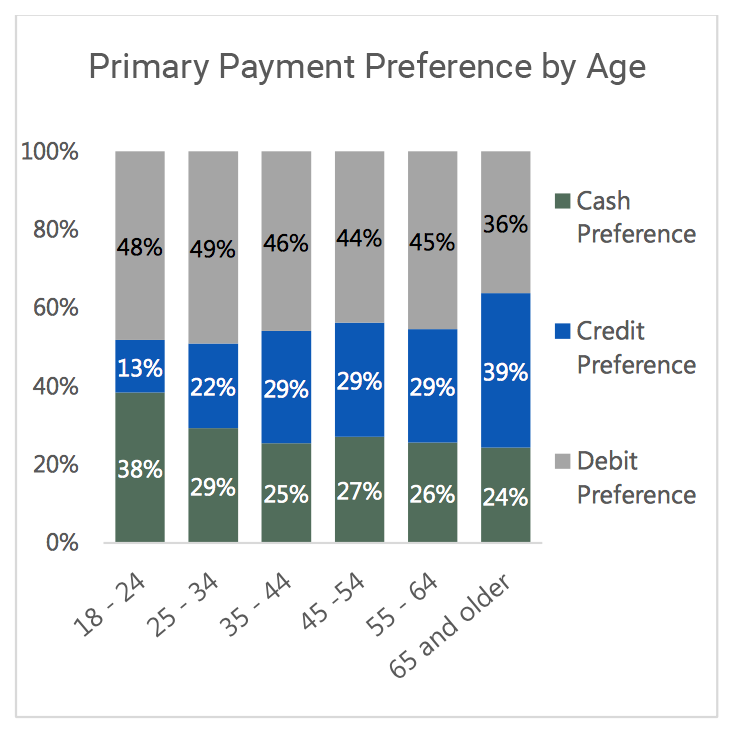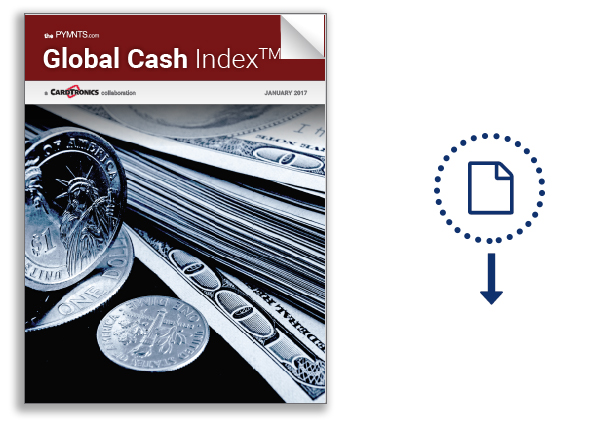With Millennials Picking Cash Over Cards, Cash Gains Steam

Cash in the Americas, it seems, is here to stay. According to new PYMNTS.com research, cash usage in the Americas is on track to hit $3.5 trillion by 2020. In the hot-off-the-presses Global Cash Index™ Americas Analysis, PYMNTS tracked the factors powering cash usage in Brazil, Mexico and the U.S
At the 2014 Worldwide Developers Conference (WWDC), Apple CEO Tim Cook announced the launch of the iPhone 6, which would come equipped with Apple Pay — a solution that promised to replace the good, old-fashioned fat wallet.
Almost three years and four new iPhones later, the company is seemingly far from replacing the average consumer’s traditional wallet. The culprit? Consumers’ undying love for cards and cash.
Unlike cards, the share of cash in the U.S. is slowly but surely decreasing. However, it’s far from going out of fashion.
As of 2015, cash usage represented 13.1 percent of overall U.S. gross domestic product (GDP), the latest PYMNTS Global Cash Index™ found.
And while there has been some decline, nearly a third of retail purchases made in the U.S. today are still paid for with cash, making it the most popular form of retail payment instrument, according to San Francisco Federal Reserve’s 2015 “Diary of Consumer Payment Choice.”
PYMNTS recently caught up with Claire Wang and Wendy Matheny, co-authors of the Federal Reserve’s study, to dig into the changing consumer payment habits across the U.S.
Millennials dig cash
The recently published study, which analyzed spending behavior and payment experiences of 2,500 Americans, found older consumers, aged 35 to 44, increasingly using card- and mobile-based payments. Younger millennials, on the other hand, showed a higher propensity for cash.
“The fact that 18-to-24-year-olds made a larger share of people who prefer using cash pretty much throws cold water on the idea that only older people use cash or that younger consumers don’t like cash,” Matheny said.

Source: Cash Product Office
The preference for cash among younger millennials can be partly explained by the fact that younger consumers may not necessarily have the same access to credit that older consumers have or that they may have access to credit but their credit score is a lot lower, which restricts their access to different payment products, Matheny explained.
A high preference for using cash was also found on the opposite end of the spectrum among consumers age 65 or older, who used it for 36 percent of their transactions, the study found.
“When you look at older consumers, they have always used cash, and they are going to continue using cash. For younger consumers, it again might be that this is the option they have on hand,” Matheny said.
Another factor that seems to influence consumers’ payment preference is income. According to the Federal Reserve study, households earning less than $25,000 annually showed a higher preference for cash than those making over $75,000 per year.
Overall, whether young or old, American consumers are increasingly preferring to use cash for small-value transactions. In 2015, nearly 50 percent of transactions under $25 and 60 percent of transactions valued under $10 were paid in cash, according to the Federal Reserve.
One might think that consumers are using cash for smaller transactions because many stores have a fixed minimum transaction value to accept cards, but that’s not the case, Wang explained. “It’s just probably out of convenience, out of not knowing to ask whether there’s a card minimum, [which is perhaps why] consumers are still using cash,” she said.
Consumers might also be willing to get change for $5 and not for a $50 bill, Matheny added.
P2P is cash’s forte
Other than small-value purchases, cash is gaining popularity as a payment method for peer-to-peer money transactions. In 2015 and 2016, cash was used for purchasing 75 percent of gifts and transfers to people — an 8 percent increase since 2012, the study noted.
The high usage of cash for P2P transactions comes against the proliferation of P2P settlement apps, such as Venmo, which are inserting themselves into day-to-day situations where consumers settle money with their friends and family.
Despite the ease of use that these apps offer, their ubiquity is an impediment that hinders their widespread use.
“There are so many apps and so many options in the market,” Matheny pointed out. Until one or two really take hold, cash will continue to be the go-to payment method for P2P transactions, she added.
Oftentimes, it’s also just easier to pay someone in cash rather than using an app. If a user is trying to settle a transaction through a credit card associated with their P2P app account, it’s just easier for them to skip the process and hand over a $5 bill instead of Venmo-ing it to their friends, Matheny said.
Another reason that makes cash more popular for P2P transactions is the security it offers, Wang pointed out.
“There are so many issues with data security breaches that people don’t trust using a specific P2P app,” Wang said. “It’s a lot safer to use cash.”
Cash’s ageless future
Cash usage in the U.S. might be on a decline, but it doesn’t appear to be going away anytime soon. In fact, the overall circulation of the U.S. dollar is now at an all-time high, according to the Fed.
Today, consumers heavily prefer to use cash for paying their food and personal care supplies, auto expenses, entertainment and transportation. Among different cash spending categories, food and personal care supplies account for 52 percent of cash transactions — an important category that continues to fuel the high usage of cash, the Federal Reserve research suggested.
“If things continue as they have been, cash is maintaining its own and holding strong even with more and more payment options available out there,” Matheny said. “If, all of a sudden, for your pack of gum and your soda, you’re no longer paying cash — for that small food or personal care transaction — that’s when we would expect to see more dramatic changes in cash [usage].”
Even though it’s not on a widespread scale, the change does seem to be happening. Retailers, like Starbucks, are starting to train their customers to buy that $3 or $5 cup of coffee with their mobile app instead of using cash, Wang pointed out.
While it remains to be seen whether the change in usage of cash will dramatically accelerate or not, with a majority of U.S. consumers continuing to carry cash, the age-old payment form is likely to remain king.
TO DOWNLOAD THE THE PYMNTS.COM GLOBAL CASH INDEX — AMERICAS ANALYSIS, CLICK THE BUTTON BELOW:
About The Index
The PYMNTS.com Global Cash Index™, a Cardtronics collaboration, focuses on the use of cash for making payments and as a payment method that equally plays a role with cards, checks, direct debit and other methods of settling up between consumers and businesses. Unlike most reported estimates of cash, our proprietary data analysis focuses on the use of cash for making payments rather than hoarding.

